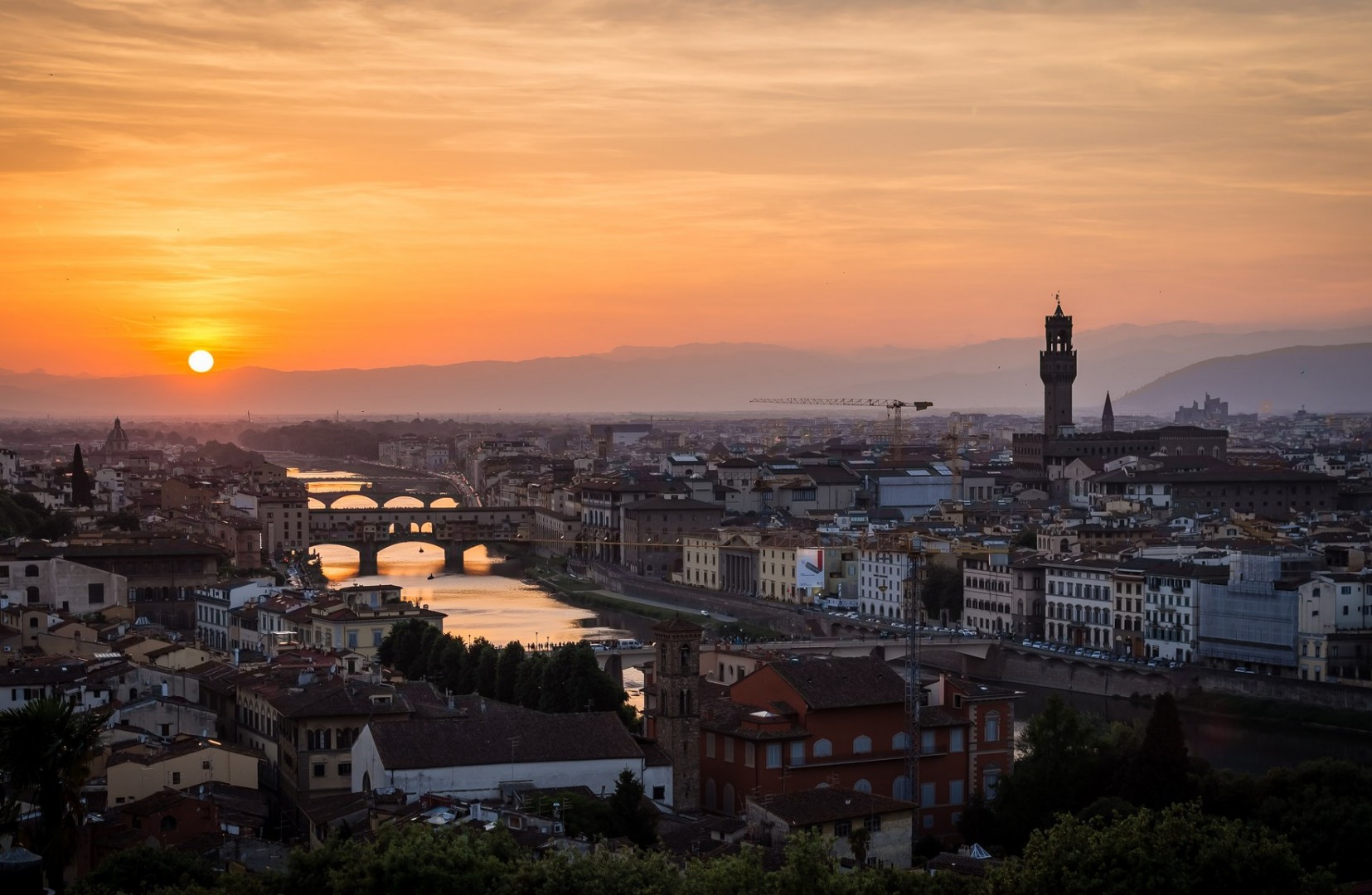
Florentia (Firenze), a Roman colony, became over the centuries free Municipality, cradle of the Renaissance, city of the Grand Duchy, capital of the Kingdom of Italy.
In the Quaternary era a lake stood in the place of the city; later a plain emerged, crossed from East to West by the Arno, little inhabited for millennia.
In the VII and VI century a.C. the Etruscans settled on the surrounding hills and built Fiesole, limiting sporadic presence in the flat areas. It was the Romans, in the first century BC, to give meaning and consistency to some small settlements that were in place of the current historical center; modeled a colony, which they called Florentia, on the square plan of the castrum, the military camp closed by a fortified wall. The choice had fallen on a point where the river is less wide and therefore more easily crossed. For hundreds of years the city remained a center of secondary importance, until after the dark centuries of barbarian presences, it returned in the twelfth century to develop as a free municipality.
The government passed from time to time by tight power groups to strong popular participation, with the constant influence of the mercantile guilds and trades, the Arts, protagonists of even very harsh conflicts.
The power was long in the hands of the Medici, a powerful dynasty of bankers who retained the domain of Firenze and Toscana for more than three centuries, during which the city became one of the most important artistic and cultural centers in Europe.
In 1737 the Hapsburg Lorena took over from the Medici, who governed the city and the region with farsightedness and prudence (with the parenthesis of the Napoleonic occupation from 1799 to 1814) until 1860, when Toscana became part of the Kingdom of Italy, of which Firenze from 1865 to 1871 was provisional capital. Since then, the fate of the city has been linked to those of the rest of the country.
The capital suffered considerable damage during the Second World War, both for the Anglo-American bombing and during the German retreat.
On November 4, 1966, a great flood of the Arno caused enormous damage to the housing and especially to the artistic and historical, arousing a vast movement of national and international solidarity around the city.